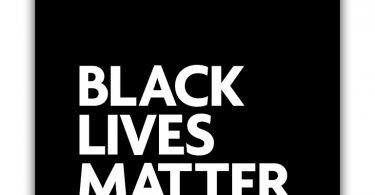The Wildlife Photographer of the Year competition, now in its 50th year, has showcased some of the most extraordinary photography from professional and amateur photographers alike.
Now co-owned by the Natural History Museum and BBC Worldwide, categories include everything from Mammals, Reptiles, Underwater Species, Birds and much more. Iconic and often ground breaking, this competition aims to show the ‘natural world’s most astonishing and challenging sights’, leading you on an incredibly journey through these darkened halls.
Split into numerous sections, each with its own theme, the opening room is dedicated to ‘Interpretations’, the ways in which technology has helped photograph nature in new and distinct ways. Encompassing everything from time lapses of wildebeest migration to the core of the planet and the power and evocation of black and white photography, it’s a strong introduction to the rest of the exhibition.
Promise for the future
This section is an insight into what the future of photography could look like as – thanks to technological advances and experimentation – concepts such as time lapses are now possible. Impressive as it is, what the future holds is even more exciting. ‘Migration In Motion’ by Will and Matt Burrard-Lucas for instance, will leave you transfixed as you watch up to 10,000 wildebeest cross the Mara River in just under half an hour.
One of the most inspiring aspects of this competition is the acknowledgement of young photographers, all under the age of 17, who manage to stand on their own against the heavyweights of photography. It’s great to see talent at such an age, revealing that even professionals with years of experience can be matched by their younger counterparts.
This is most evident with two photographs in this section, ‘Stinger In The Sun’ by Carlos Perez Naval and ‘Snake-Eyes’ by Marc Montes. The former won the coveted Young Wildlife Photographer of the Year award and shows a close-up of a yellow scorpion against an incredible glowing sun. It’s amazing how precise and original this shot is and captured at such a young age – you can’t help but feel envious!
The latter, which was used for many of the WPY’s promotions, is another close-up but this time of a taunting grass snake looking straight into the lens. It’s one of those shots that are a once in a lifetime moment, and the composure and professionalism that it must have taken is remarkable.
Perceptions
The scope of topics and phenomena that the competition and exhibition cover is quite astonishing. Whether a shot is taken for its aesthetic qualities, its impact or simply the message it’s trying to convey. This doesn’t mean the finer details aren’t covered at the expense of a bigger picture, but just that we’re offered a more diverse insight into the natural world.
This is evident with ‘Mammals’ and ‘World In Our Hands’, which stand side-by-side, seemingly complimenting each other well as they show two juxtaposing sides of nature’s power to adapt in all circumstances. ‘Mammals’ is more of a focus on animals in the wild and their attempts to survive in the unforgiving natural world. From surviving bush fires to forming new hunting techniques and the importance of camouflage, it’s a powerful look into the day-to-day of so many of the planet’s species.
‘World In Our Hands’ is a study of the ever-changing relationship between nature and infrastructure, whether this is in the heart of Africa, the towers of Hong Kong or even the Hollywood Hills. This section is home to one of the most striking images of the whole exhibition: a cougar set against the backdrop of the iconic Hollywood sign. Entitled ‘Hollywood Cougar’ by Steve Winter, the only light in the shot is from the sign, literally putting the cougar in the spotlight where it suddenly becomes a star of sorts.
The power of man
This is also a reminder of the destructive power of man and the ways in which we affect the natural order every day. An incredibly powerful example of this comes from two separate shots of sharks side to side, the ‘Sea of Death’ by Paul Hilton and ‘The longline lottery’ by Rodrigo Friscione Wyssmann.
Hilton’s image shows a Hong Kong rooftop fully covered in shark fins, a delicacy in the area, which represents the slaughter of an estimated 30,000 sharks. It’s a horrifying sight and a perfect reflection on the effects of mass fishing. Wyssmann’s is more tragic in nature as it shows a shark caught in the line of a fisherman’s buoy and its inability to escape, rendering this powerful creature into a weak and helpless being.
During the preview, a journalist asked Wildlife Photographer of the Year ‘Grand Title Winner’ Michael ‘Nick’ Nicholls why he got into this line of profession, ‘To save the world’, he responded, almost instinctively. This is a brilliant summation of what this competition is all about.
These photos show us the wonder and might of the natural world but simultaneously, the negative impact we are having on it. This is photographic conservation because – as much we can enjoy these shots – they won’t be around much longer unless there is still beauty to capture. At the end of the show, there is a brief history of the awards and the many winners since its inception. Even to this day, these images retain certain a sense of immutability and, if there is anything that can help save the natural world, it might just be photography.


![[Image - Ary Bassous]](https://www.fqmagazine.co.uk/wp-content/uploads/2014/10/08b282bed88832c9197a25b1ea22b623.jpg)

























